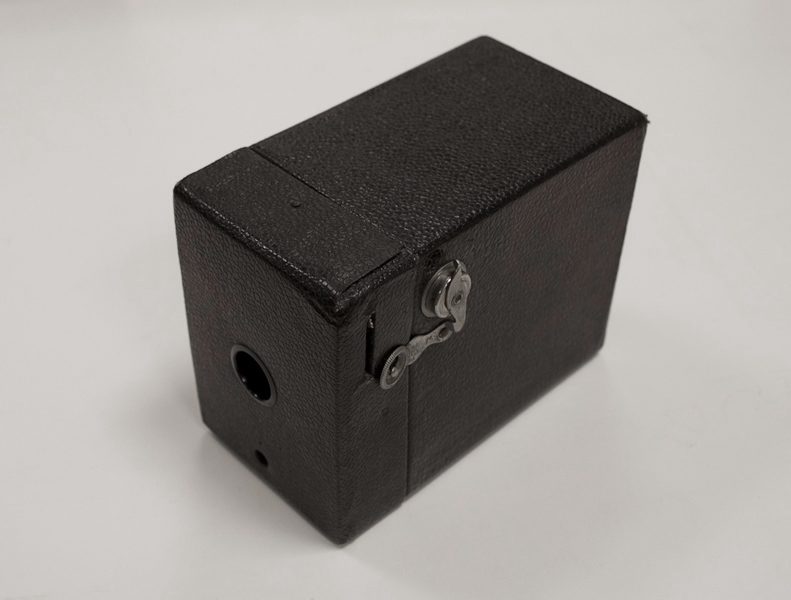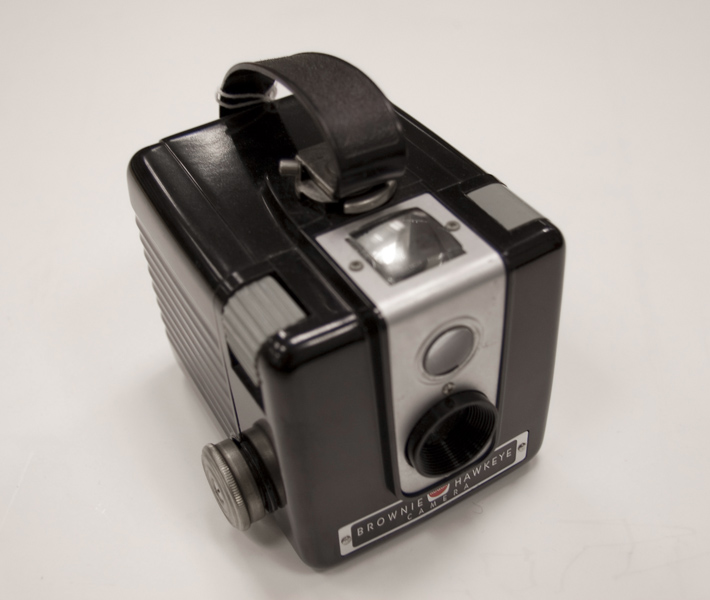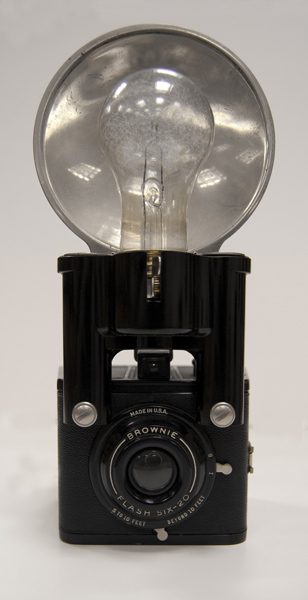Taking photographs is like second nature to us now; we can snap a quick shot on our computers, laptops, cell phones, and with increasingly small and inexpensive digital cameras. It’s cheaper and easier than ever before to preserve special moments and with no film or processing to worry about anymore, every moment can be documented and remembered. How many photos did you take on your last holiday?

It’s difficult for us to imagine a time when most people could only have photos taken at a professional studio. In the 19th century, amateur photography was time consuming, often dangerous, and always very expensive. Some images were taken directly on metal or glass and only one copy could be had. Photographic “film” that allowed copies consisted of glass plates or paper soaked in chemicals.
When the Eastman Kodak Company introduced the first personal use camera in 1888, it was the beginning of the amateur snap shot. The Kodak Camera cost about $25 (that may not sound like much, but that would be about $550 today) and came pre-loaded with 100 shots. When the film was done, the customer packaged up the camera and sent it back to the Kodak Company in Rochester, NY for developing. The pictures were mailed back, along with a newly loaded camera for the price of $10 (about $235 now). Kodak had made photographs easier, but they were still expensive. To really make money, and make sure the Kodak name was in every home, they had to make it cheaper.

A brilliant entrepreneur, George Eastman challenged his designers to come up with the cheapest camera possible; something that was economical to make and easy to use. The Brownie Camera was born. First sold in 1900, the Brownie cost $1.00 (less than $25 today) and was a simple box design with few moving parts. Ads claimed “Any school-boy or girl can make good pictures with one of Eastman Kodak Company’s Brownie Cameras!” With a product cheap and sturdy enough for a child to use, Kodak aimed its marketing campaigns at kids, opening “Brownie Camera Clubs of America” and enticing budding photographers to get snap happy. Nearly 250,000 of the first Brownies were manufactured. The Brownie evolved over the years, becoming sturdier, smaller and eventually including flash.

Ryerson Library Special Collections holds an extensive Heritage Camera Collection, including many popular models Kodak cameras. Make an appointment (asc@ryerson.ca) or drop by the fourth floor to have a look!

For more information on the history of the camera, check out these Ryeron Library Resources:
Camera : a history of photography from daguerreotype to digital / Todd Gustavson. Publisher New York : Sterling Pub., 2009. https://torontomu.primo.exlibrisgroup.com/discovery/fulldisplay?vid=01OCUL_TMU:01OCUL_TMU&docid=alma991000169809708636
History of Kodak cameras. Publisher Rochester, N.Y. : Photographic Products Group, Eastman Kodak Co., / 1987. https://torontomu.primo.exlibrisgroup.com/discovery/fulldisplay?vid=01OCUL_TMU:01OCUL_TMU&docid=alma991006741419708636~S0
The art of the American snapshot, 1888-1978 : from the collection of Robert E. Jackson / Sarah Greenough and Diane Waggoner ; with Sarah Kennel and Matthew S. Witkovsky. Publisher Washington [D.C.] : National Gallery of Art ; Princeton, N.J. : Princeton University Press, 2007. https://torontomu.primo.exlibrisgroup.com/discovery/fulldisplay?vid=01OCUL_TMU:01OCUL_TMU&docid=alma991005991429708636
Sources:
Kodak. “The Brownie @ 100 : A Celebration.” Kodak. N.p., n.d. http://www.kodak.com/US/en/corp/features/brownieCam/ Accessed 16 Feb. 2011.
Kodak. “Building the Foundation, Kodak”Kodak. N.p., n.d. http://www.kodak.com/ek/US/en/Our_Company/History_of_Kodak/Building_the_Foundation.htm Accessed Feb. 16 2011.